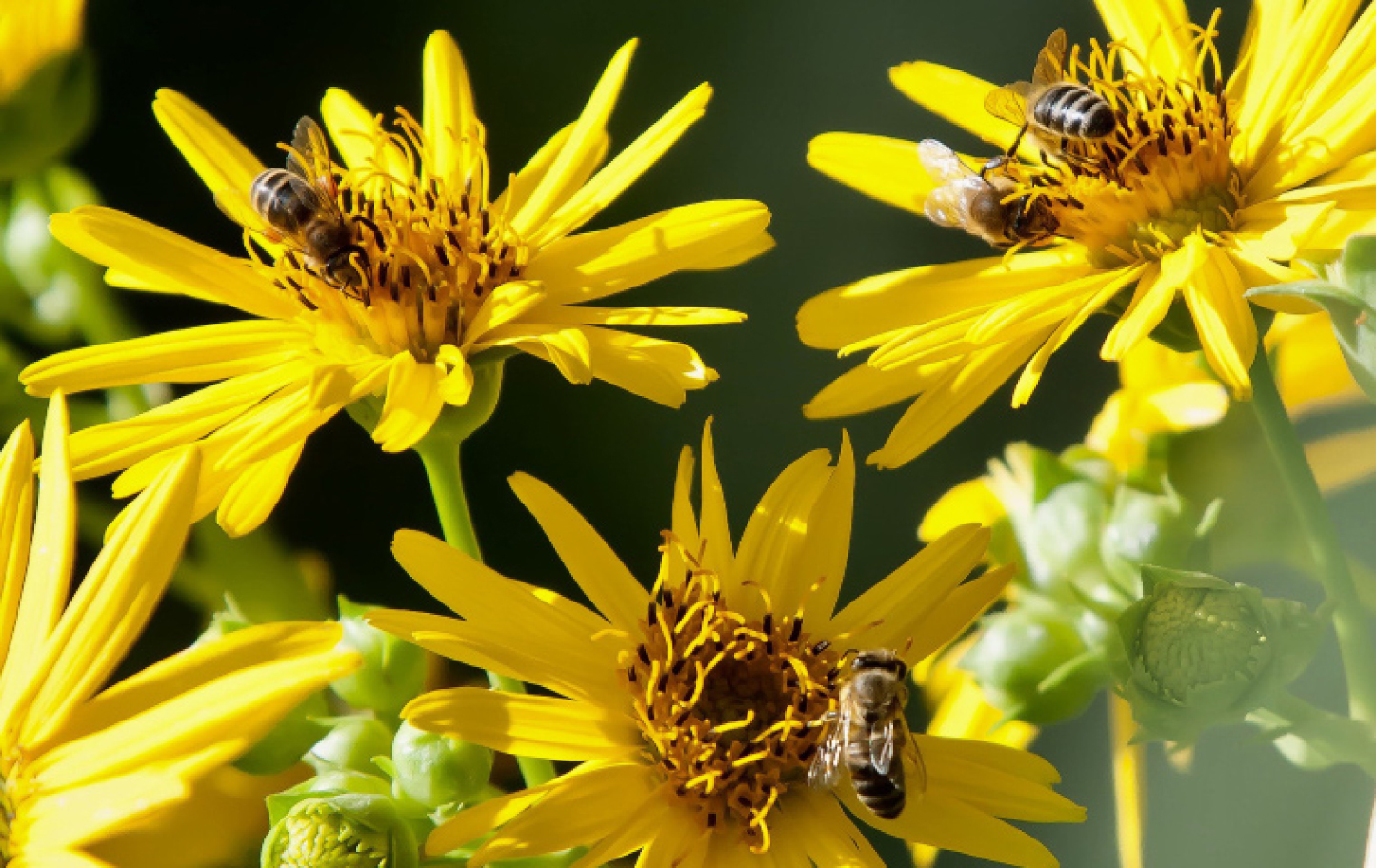Farm & Ranch
The Garden Guy – Cup Plant

Cup Plant – One Stop Cafe for Birds and Pollinators
By Norman Winter
When it comes to the backyard wildlife habit, the cup plant does it all. To me, it is like the flag bearer perennial for bees, butterflies and birds. It is a stalwart native in 34 states including those that border states around Texas, minus New Mexico and could be just the plant needed for North Texas farm and ranch landscapes.
However, its size makes you feel like it is the composite, or aster if you will, that ate New York. It is big, bold and wonderful and this is the time of the year it shines the most. If you are getting interested but are unfamiliar with the cup plant, it is known botanically as Silphium perfoliatum, and, as I alluded above, cold hardy from zones three to nine. It can grow tall, four to 10 feet and colonizes, so it is a plant for the back of the border.
Though it may be hard to imagine, they can dwarf a brown-eyed Susan, Rudbeckia triloba, or a Brazilian sage, Salvia guaranitica, both also considered large plants and terrific partners for the cup plant.
You may be asking, why is it called a cup plant? This is one of the magical attributes of the plant. As the plant grows, it develops large square stems that give the impression of piercing the center of the large leaves. It’s actually two leaves without petioles that are attached to the stem, forming a perfect cup to collect rainwater. Small birds like finches take advantage of this natural reservoir of water. These same birds also feed on the seeds as they mature and get ready to disperse.
You will find the blooms to be covered in what may best be described as a pollinating frenzy. Every kind of bee, including honeybees by the hundreds, bumble bees, and plenty of those you don’t know, including wasps, are there doing their thing.
You will also notice eastern tiger swallowtails, long-tailed skippers, fiery skippers and yellow sulphur butterflies. It is like a Serengeti for pollinators. You are also likely to find hummingbirds on the plants as well.
To read more pick up a copy of the August 2018 NTFR issue. To subscribe call 940-872-5922.
Farm & Ranch
Ag Elsewhere: Wyoming

By Tressa Lawrence
Babies are tucked away in every nook and cranny. Many ranchers across Wyoming have baby animals popping up all over this time of year.
Farm & Ranch
Ag Elsewhere: Montana

By Lindsey Monk
Another load of grain in to keep feeding the calves until the green grass can really start popping.
Farm & Ranch
Meanwhile, Back at the Ranch….

By Rayford Pullen | [email protected]
Spring has sprung and hopefully the rains will continue where our country will heal from the previous droughts and our grasses will thrive. We are especially hopeful for the Panhandle of Texas where our neighbors and friends have been dealt a deadly blow to homes, ranges, livestock, and people. Keep them in your prayers as they will not be able to return to normal for many years if at all. Having lost their ability to benefit from this great cattle market is a double whammy for all of them.
Now is the time of year when we need to take care of business as it relates to our new calves that have been hitting the ground this spring. First and foremost is vaccinating for Blackleg followed by deworming with a white wormer and the IBR complex. Blackleg is a soil-born disease and with pastures extremely short this spring our calves have been grazing the green grass as soon as it shows itself, making them even more vulnerable to picking contaminates from the soil.
To read more, pick up a copy of the April issue of NTFR magazine. To subscribe by mail, call 940-872-5922.
-

 Country Lifestyles1 year ago
Country Lifestyles1 year agoScott & Stacey Schumacher: A Growth Mindset
-

 Equine7 months ago
Equine7 months agoThe Will to Win
-

 Country Lifestyles7 years ago
Country Lifestyles7 years agoStyle Your Profile – What your style cowboy hat says about you and new trends in 2017
-

 Country Lifestyles4 years ago
Country Lifestyles4 years agoAmber Crawford, Breakaway Roper
-

 HOME7 years ago
HOME7 years agoGrazing North Texas – Wilman Lovegrass
-

 Country Lifestyles7 years ago
Country Lifestyles7 years agoDecember 2016 Profile, Rusty Riddle – The Riddle Way
-

 Country Lifestyles8 years ago
Country Lifestyles8 years agoJune 2016 Profile – The man behind the mic: Bob Tallman
-

 Country Lifestyles8 years ago
Country Lifestyles8 years agoCowboy Culture with Clay Reid – Being a Man






